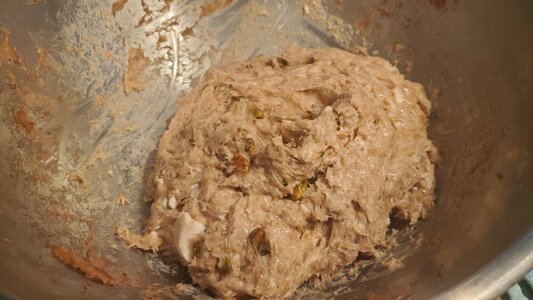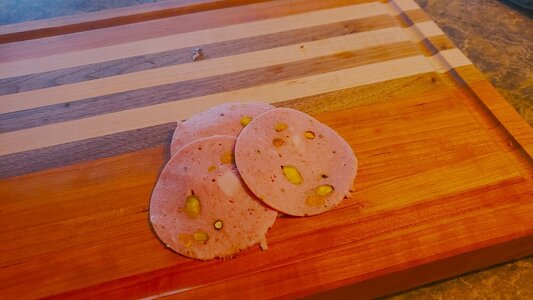Thank you,
I've not had much luck grind and emulsifying together as it separates the water when I poach at 165F to internal temp of 155F. I don't have that problem if I grind (3mm) the meat separate, salt and sit the meat overnight and emulsify it followed by adding the fat (4.5mm) and spices and continuing the emulsifying until done.
I DO use 70/30 mix. I use pork side halves and cut out the fat to put with added fat the butcher gives me for free to get to the 30% (sides vary somewhat one to another)
I've gone through some evolution on emulsifying. I started with food processor but then used the grinder making semi frozen LOGS and stuffing them down the chute and the extra work with the partially frozen produces the fine emulsion.
I've also put a small stuffing tube on to restrict the output of the grinder which again emulsifies it. However, I wrap the grinder housing and chute with pliable freeze packs to keep the temp low with extra packs to replace as needed depending on how much I do. (freeze packs leftover from knee operation)
I've also taken the grinder housing and capped the openings and inserting into a small container of water and let it freeze. Bit of water run on the box to extract the whole thing. Only problem was it really kept it cool but made a mess with the melting if I was doing a big batch and had to place the grinder on a cookie sheet.
When I saw videos of the Champion emulsifying, I didn't stop to think about how I would manage it in separate meat/fat grinds and all the videos only show everything done all together and I find it hard to believe that I can get a proper emulsion when not doing the separate extraction with the meat only.
Generally, I don't add the spices with the meat, just the cure #1 and the salt, figuring the spices may inhibit the extraction process. I mix the spices with the fat or sometimes using another step to mix in after the meat and fat are emulsified together, depending on what method I'm using at the time. I use a stand mixer to mix.
Another thing I do different is I no longer use casings of any kind. I "extrude" 12" lengths onto oiled parchment and cut in half when placed on the Lem 15x15"
dehydrator trays.
I dehydrate sufficient to "skin" the outer case before poaching. They don't stay perfectly round but the looks I don't care about, it's taste and texture that counts.
Normal sized wieners oval slightly but jumbos a bit more.









